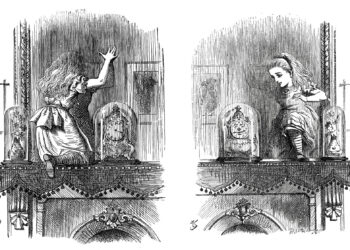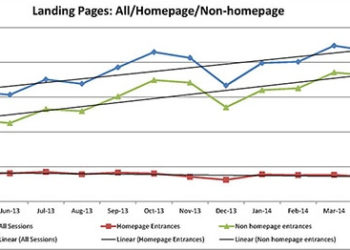In this age of digital content distribution, most of us probably think about publishing as a clean digital process with sleek computers, mutable fonts and hi-tech reading devices, rather than a messy, dirty manufacturing process. In fact, even most modern manufacturing facilities aren’t messy or dirty, but clean and efficient. The dance of creating things in those environments is so often shielded from our eyes these days that we aren’t often connected to the process that creates the thing you purchase in a store or order from an online shop. In part, there’s a loss to this, since there is a real art in manufacturing, especially in printing. An excellent example of this is the YouTube video below, entitled, How Ink is Made, produced by the Printing Ink Company.
It was years into my publishing career before I stepped foot into a “real” print manufacturing facility. I qualify this by adding “real” because my first tour of printing facility was during my time at Haworth Press in the mid 1990s. At the time, Haworth maintained its own manufacturing facility, the space was more like a warehouse containing a very busy Kinkos than what might envision when picturing a traditional print shop. One of Haworth’s innovations was printing digital books and journals using a DocuTech Production Publisher Model 135 (DT135), which was simply a large, powerful digital photocopier. While the Haworth shop was efficient and flexible, it wasn’t what I had in my own mind of what a printer was like. It wasn’t until years later that I saw a massive working 4-color press with the massive rolls of paper lifted by forklifts. The scale and efficiency of the process was amazing. If you ever have the opportunity to tour a large-scale printing facility, I strongly encourage you to do so.
How many of us involved in publishing have any connection to the ink, paper and binding process of the great quantities of physical materials we produce? It seems that the manufacturing process that has for centuries been so central to what it means to be a publisher is fading into the background. Years ago, electronic production was an after thought. With journals, we very likely have made a shift and books are rapidly moving in that direction as well. Today, we may be entering a world where the print version is an after thought, something that is prepared for special occasions or special distribution. In this, something likely will be lost; more than just the feel of the paper, but the art of creating a beautiful object.
Though a few years old, video is an excellent reminder of the passion and precision that goes into manufacturing the printed items we still use and rely on every day. We might not always think about the detail that goes into every printed object we pick up, but often it is there. The same loving care for the process could be said of many of the editors, they typesetters, the binders and distributors who work behind the scenes in our processes. They deserve a bit of honoring from time to time.
Discussion
6 Thoughts on "How Ink is Made: A Beautiful Reflection of the Analog World we still inhabit"
Thank you, Todd! This brings back beautiful memories!
Bill Cohen, Founding Publisher
The Haworth Press, Inc. (now part of Routledge/Taylor & Francis)
Publisher, Harrington Park Press
http://www.HarringtonParkPress.com
Great video! Although most of our readers are digital, we still offer a print option. I don’t know how many times I’ve had to remind authors, the image that looks good on your high-resolution screen may not come out the same on a four-color printing press the size of a locomotive.
Just to give one example: A thin red line on a graph will need two printing plates to be perfectly aligned because it’s made of two colors. Better to use magenta (the “M” in CMYK), which requires only one plate.
For me, watching them make the inks also brought out the issue of digital color fidelity. All monitors are not calibrated the same, or calibrated at all. For many illustrations, this doesn’t make much difference. However, where color gradients matter, providing a color profile can be critical. To tell the truth, I’m not really sure what the publishing standards are for this issue.
Feeling fortunate to have come of age in the industry while paper galley proofs and printer tours were still the norm. As Todd notes, this was a time when electronic content was secondary to print.
What a beautiful tribute and homage to art and craft of printing. This article will be required reading in the GWU Publishing Program Production Management course this summer!
Velveeta?
Okay, okay, seriously, I love shows like “How it’s Made” that take a completely ordinary object and then show you the whole hidden world that it takes to create the things we make for granted. We’re so far removed from the process of making the things that make up our daily lives. It’s great to have a video like this that applies to publishing.
I consider myself fortunate to have worked at Princeton University Press for 22 years because, among other reason,s it was the last U.S. university press to own and operate its own printing plant. When I joined the staff in 1967, the Press was in the final stages of renovating its offices in the Scribner Building, after having moved all the printing machinery to a new location in Lawrenceville, about six miles away. But I had the opportunity to visit the plant on numerous occasions to witness at first hand how the Press’s books and journals were produced. At the beginning, the process involved hot-metal composition on Linotype machines, with the printing done on flatbed Mergenthaler presses. Long green galley proofs were still in use at the time. Web presses came to be added later, and then along came photocomposition devices and the whole process became computerized. It was like watching the history of modern printing unfold before my eyes. The Press only sold the printing plant in 1993, four years after I had left to become director at Penn State University Press. I will always value the education i received at PUP in the art of printing.



